Nationality Australian Parents Minnie Pwerle Role Artist | Name Barbara Weir Known for Painting | |
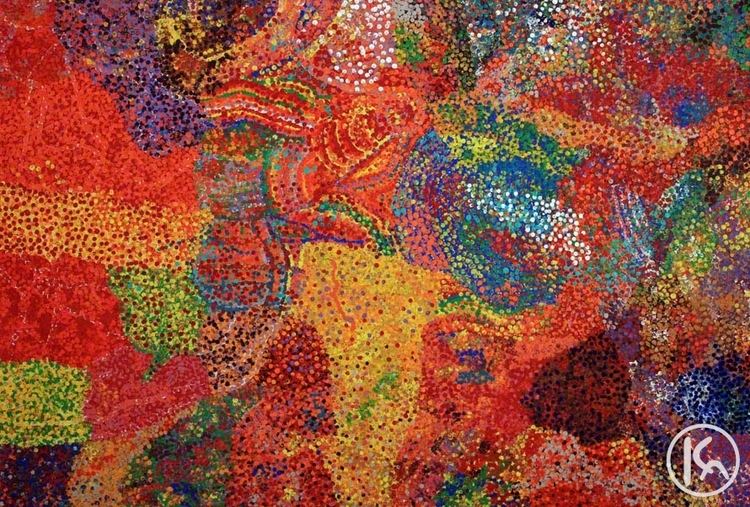 | ||
Artwork Bush Berry, Women's Ceremony, Awelye Series Grass Seeds, My Mother's Country | ||
Barbara weir paintings famous aboriginal painters
Barbara (originally Florrie) Weir (born c. 1945) is an Australian Aboriginal artist and politician. One of the Stolen Generations, she was removed from her aboriginal family and raised in a series of foster homes. After becoming reunited with her mother in the 1960s and divorced in 1977, Weir eventually returned to her family territory of Utopia, 300 kilometres (190 mi) northeast of Alice Springs. She became active in the local land rights movement of the 1970s and was elected the first woman president of the Indigenous Urapunta Council in 1985. She did not begin painting until 1989 at about age 45, but she became recognised as a notable artist of Central Australia. Her work has been exhibited and collected by major institutions. She also has managed her mother's career; since Minnie Pwerle began painting in 2000, her work has become popular.
Contents
- Barbara weir paintings famous aboriginal painters
- DACOU Barbara Weir talks about Emily Kame Kngwarreyewmv
- Early life and education
- Marriage and family
- Political career
- Artistic career
- Major collections
- References
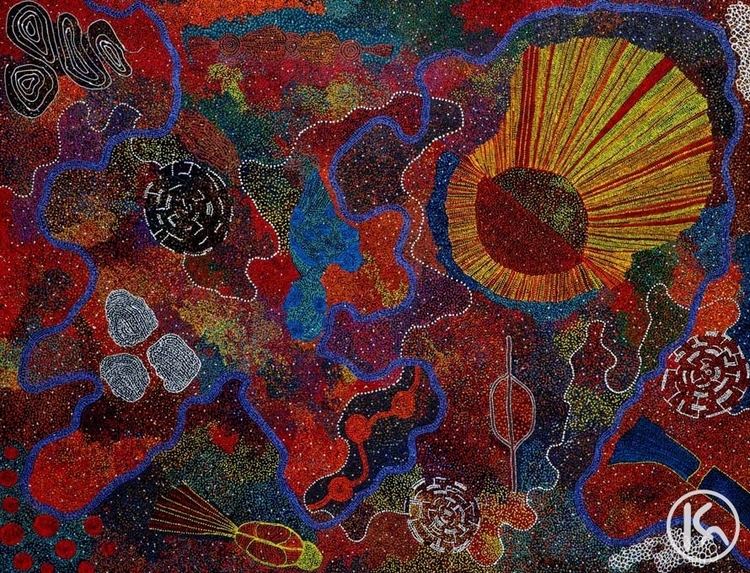
DACOU: Barbara Weir talks about Emily Kame Kngwarreye.wmv
Early life and education
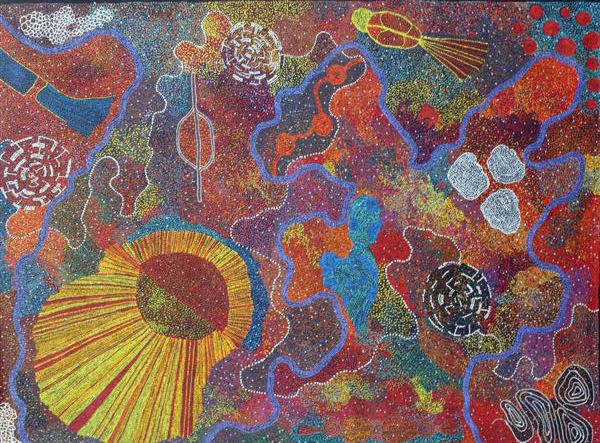
Barbara Weir was born about 1945 at Bundey River Station, a cattle station in the Utopia region (called Urupunta in the local Aboriginal language) of the Northern Territory. Her parents were Minnie Pwerle, an Aboriginal woman, and Jack Weir, a married Irish man described by one source as a pastoral station owner, by a second as "an Irish Australian man who owned a cattle run called Bundy River Station", but by another as an Irish stockman. Under the anti-miscegenation racial laws of the time, their relationship was illegal, and the two were jailed. Weir died not long after his release. Pwerle named their daughter Barbara Weir.

Weir was partly raised by Pwerle's sister-in-law Emily Kngwarreye. (After age 80, Kngwarreye took up art and became a prominent artist.) Weir grew up in the area until about age nine. One of the Stolen Generations, she was forcibly removed from her Aboriginal family by officials; the family believed she was later killed. This was done under the Aborigines Protection Amending Act 1915, government or assigned officers were authorized in the territories to take half-caste children to be raised in British institutions to assimilate them to European culture. Some, like Weir, were "fostered out", and she grew up in a series of foster homes in Alice Springs, Victoria, and Darwin. Boys were usually prepared for manual jobs and girls for domestic service.
Marriage and family

In Darwin, at age 18 and working as a maid, Weir married Mervyn Torres. It was Torres who in 1963 or 1968, when passing through Alice Springs, asked someone about Weir's mother; he discovered that Pwerle was alive and living at Utopia. Mother and daughter were reunited but, although Weir regularly visited her family at Utopia, she did not form a close bond with her mother at first. Weir and Torres had six children before the marriage ended in 1977. She moved permanently to Utopia with her mother and family. As of 2000 she had thirteen grandchildren.
Political career
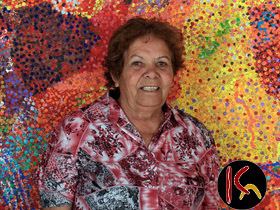
Weir was active in the local land rights movement of the 1970s, working to recover Aboriginal territory. She was elected as the first woman president of the Indigenous Urapunta Council in 1985. As of 2008 she was living in Alice Springs.
Artistic career
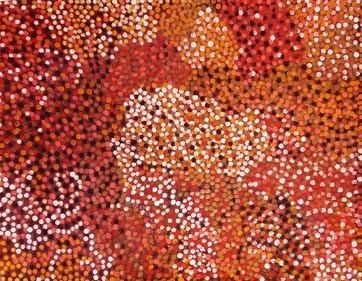
In midlife, Weir began to explore Aboriginal artistic traditions. She first painted in 1989 at the age of about 45. Five years later in 1994, she was one of a group of ten Utopia women who travelled to study batik in Indonesia. Her paintings include representations of particular plants and "dreamings", inspired by deep Aboriginal traditions. It has been exhibited and collected by major institutions. Art expert Jenny Green has commented, "In some of her paintings residual traces of women's ceremonial designs are almost entirely obscured by the heavy textural application of natural ochres."
After Weir's mother Minnie Pwerle took up painting on 2000, she quickly became a successful artist. Weir played a significant role in managing her mother's artistic career, including regularly preventing her from being "kidnapped" by people wanting the aging artist to paint for them.
